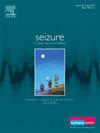华南地区脑静脉窦血栓形成中癫痫发作的相关因素:一项回顾性、多中心、自我对照研究
IF 2.7
3区 医学
Q2 CLINICAL NEUROLOGY
引用次数: 0
摘要
目的探讨脑静脉窦血栓患者癫痫发作的危险因素及预防措施。方法对2010年1月至2020年10月在华南地区3家医院收治的216例脑静脉窦血栓形成患者进行回顾性研究。患者分为两组,包括有和没有早期癫痫发作的患者(诊断为CVST后14天内)。早期发作组分为2个亚组:晚期发作组(CVST诊断14天后)和无发作组。非早期发作组也分为2个亚组。分析比较两组患者的人口学特征、实验室指标、影像学资料及抗癫痫药物使用情况。结果共纳入216例CVST患者,其中早期发作组33例,非早期发作组183例。本研究中,早发组有9例(27.3%)患者出现晚发性癫痫发作,非早发组仅有8例患者出现晚发性癫痫发作,两组间晚发性癫痫发作发生率差异有统计学意义(p <;0.05, 9/33比8/183)。单变量分析显示,d-二聚体水平(P = 0.030)、实质病变(P = 0.008)、颅内出血(P <;0.001),上矢状窦受累(P = 0.003),皮质静脉受累(P = 0.003)。Logistic回归分析显示颅内出血(P = 0.005, OR=6.303, 95% CI 1.732 ~ 22.941)可能是早期癫痫发作的危险因素之一。除了三个静脉窦受累外,早期发作组的晚期发作亚组与非早期发作组的晚期发作亚组之间无单变量差异。结论早期发作的CVST患者发生晚期发作的可能性大于未发生早期发作的患者。颅内出血可能是早期癫痫发作的危险因素之一。晚期癫痫发作的危险因素需要在未来的临床研究中确定。没有足够的证据表明使用ASM可以防止早期癫痫发作进展到晚期癫痫发作。本文章由计算机程序翻译,如有差异,请以英文原文为准。
The factors related to epileptic seizures in cerebral venous sinus thrombosis in southern China: A retrospective, multicenter, self-controlled study
Objective
To investigate the risk factors for and prevention of seizures in cerebral venous sinus thrombosis patients.
Methods
This retrospective study included 216 patients with cerebral venous sinus thrombosis (CVST) from 3 hospitals in southern China from January 2010 to October 2020. Patients were divided into 2 groups comprising patients with and without early seizures (within 14 days of the diagnosis of CVST). The early seizure group was divided into 2 subgroups: those with late seizures (after 14 days of CVST diagnosis) and those without seizures. The non-early seizure group was also divided into 2 subgroups. The different groups were analyzed and compared in terms of demographics, laboratory indices, imaging data and the use of antiseizure medications (ASMs).
Results
A total of 216 patients with CVST were included in the study, including 33 patients in the early seizure group and 183 patients in the non-early seizure group. In this study, 9 (27.3 %) patients in the early seizure group and only 8 patients in the non-early seizure group experienced late seizures, and the difference in the incidence of late seizures between the two groups reached statistical significance (p < 0.05, 9/33 vs. 8/183). Univariable analysis revealed statistically significant differences in d-dimer levels (P = 0.030), parenchymal lesions (P = 0.008), intracranial hemorrhage (P < 0.001), superior sagittal sinus involvement (P = 0.003), and cortical venous involvement (P = 0.003) between the early seizure group and the non-early seizure group. Logistic regression analysis revealed that intracranial hemorrhage (P = 0.005, OR=6.303, 95 % CI 1.732–22.941) may be one of the risk factors for early seizures. There was no univariate difference between the late seizure subgroup in the early seizure group and the late seizure subgroup in the non-early seizure group, except for the involvement of three venous sinuses.
Conclusions
Patients with CVST who have early seizures are more likely to have late seizures than those who do not have early seizures. Intracranial hemorrhage may be one of the risk factors for early seizures. The risk factors for late seizures need to be identified in future clinical studies. There is insufficient evidence that the use of ASM prevents early seizures from progressing to late seizures.
求助全文
通过发布文献求助,成功后即可免费获取论文全文。
去求助
来源期刊

Seizure-European Journal of Epilepsy
医学-临床神经学
CiteScore
5.60
自引率
6.70%
发文量
231
审稿时长
34 days
期刊介绍:
Seizure - European Journal of Epilepsy is an international journal owned by Epilepsy Action (the largest member led epilepsy organisation in the UK). It provides a forum for papers on all topics related to epilepsy and seizure disorders.
 求助内容:
求助内容: 应助结果提醒方式:
应助结果提醒方式:


